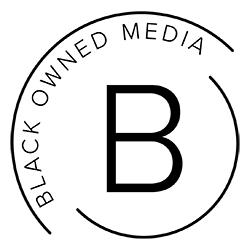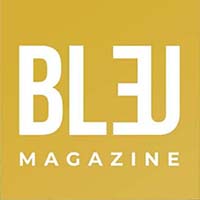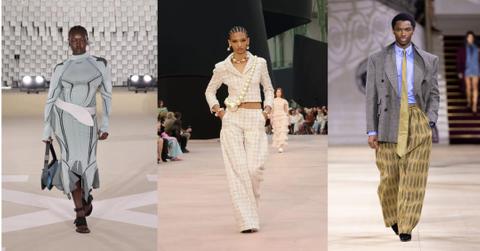
Cornrows on the Catwalk: How Black Hairstyles Live on the Runway
From Chanel’s cornrows to Dior’s braided masterpieces, Black hairstyles aren’t just trending—they’re transforming high fashion. Meet the stylists breaking barriers backstage and redefining beauty on the runway.
By Sarah HersomApril 19 2025, Published 9:24 p.m. ET
At the tail end of a Paris Fashion Week that crowned Doechii as the new fashion week “it-girl,” had A$AP Rocky front row at Miu Miu, and delivered unforgettable shows from heavyweights like Balenciaga, Chanel, and Dior, you may or may not have noticed a subtle yet significant presence: natural, braided hair or cornrows.
For Paris Fashion Week Womenswear FW25, Black models with short natural hair were seen at almost every show, from Yves Saint Laurent to Maison Schiaparelli. Cornrows at Chanel, box braids at Vaquera, and textured styles across major houses have signaled an evolution in how high fashion approaches Black hair. Traditional and contemporary Black hairstyles are no longer a rarity in high fashion—they’re showing up everywhere, from runways to campaigns, editorials, and the ads you instinctively scroll past. Once an anomaly in these spaces, Black hair is steadily becoming part of fashion’s visual language rather than an exception.
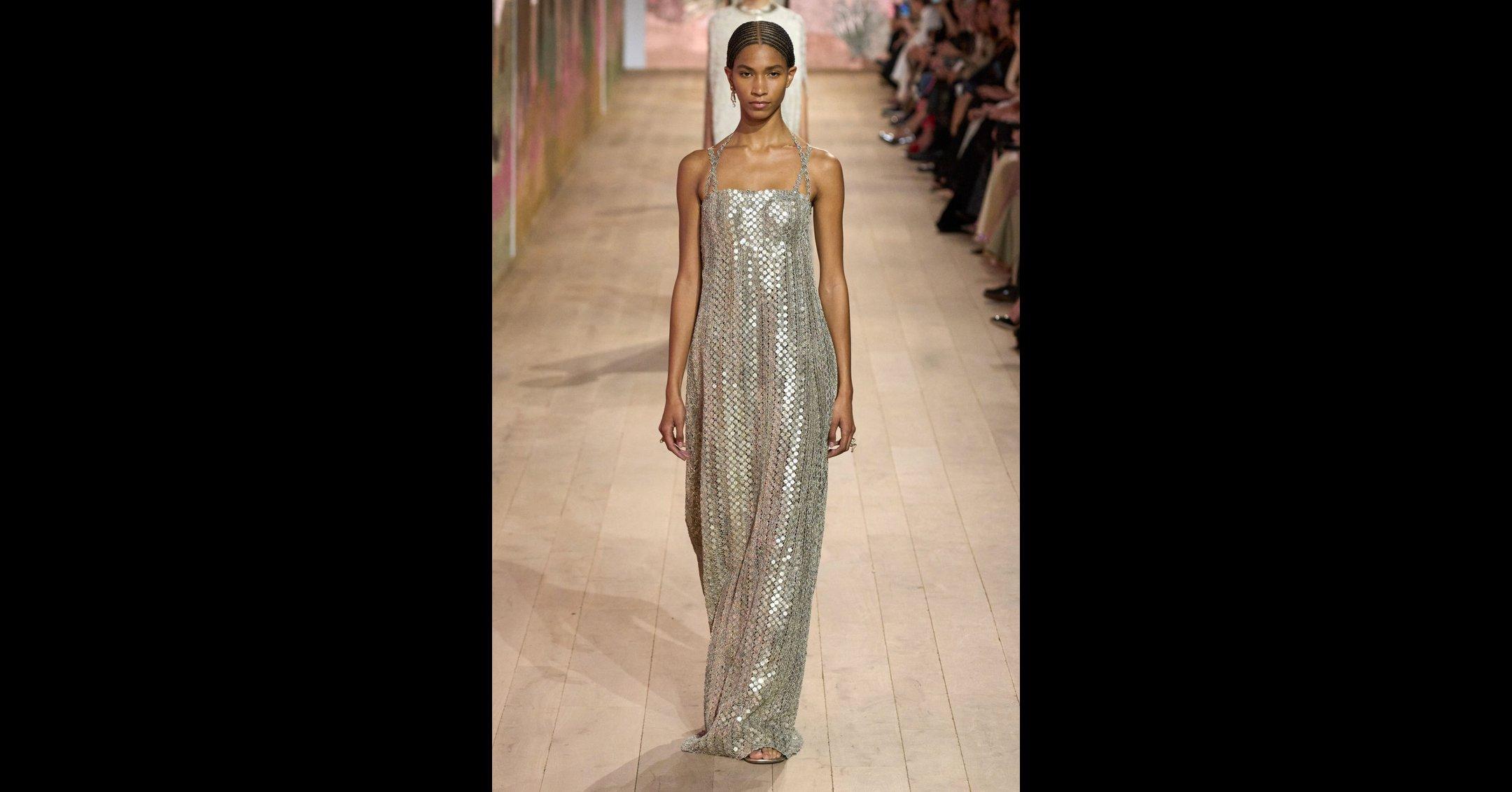
Dior AW23 Couture Show. Photo by Daniele Oberrauch / Gorunway.com
The Rise of Black Hairstyles in High Fashion
In New York City, cornrows have long been a staple of urban street style, worn by cultural icons across generations. But what’s new is seeing them on high-fashion runways—not as a political statement oran "edgy" choice, but simply as fashion. Flip through any magazine this year and cornrows, box braids, and other Black hairstyles are more visible than ever across Western brands. These hairstyles carry deep cultural roots and have long been emblematic of Black identity and resilience. Their presence on high-fashion runways signifies a broader acceptance and appreciation of Black culture within the fashion industry—an evolution that reflects a move toward inclusivity, where beauty standards are expanding to honor diverse expressions.
The journey of Black hairstyles into the mainstream fashion spotlight hasn't been without challenges. We don’t need to revisit how these styles were historically marginalized or deemed unprofessional. However, the recent prominence of cornrows and similar hairstyles on global platforms like Paris Fashion Week indicates a transformative change.
Although the style of cornrows dates back to 3000 B.C., it wasn’t until the 1960s that Oscar-nominated Cicely Tyson became the first Black woman to wear cornrows on mainstream TV, rocking the hairstyle on the television drama series East Side, West Side. Fast forward to 2018, world-famous tennis champion Serena Williams made history as the first woman to wear cornrows on the cover of Teen Vogue magazine. Long before high fashion embraced the style, basketball legend Allen Iverson was already making history as one of the first professional basketball players to wear cornrows on the court, despite facing significant controversy for this choice. Famously, Iverson was seen sitting courtside and getting his hair braided mid-game by his mother. The ripples of these iconic moments are still felt today, as they are representations of the proud visibility of Black hair that has paved the way for broader acceptance.
Supermodel Anok Yai, celebrated for reshaping hair culture on the runway and serving as a fashion icon for the Black community, once stated, “I refuse to do any shows or shoots with straight hair—it’s afro or cornrows or nothing.” Just four months after signing with Next Models, she made history as the second Black woman to open a Prada show since Naomi Campbell in 1997.
Anok Yai has also shared that when she first began modeling, “brands didn’t know what to do with my hair and my skin.” We don’t have to go that far back in time to find an era where Black hairstyles were almost nonexistent on the runway. In Alexander Wang’s Fall ’18 collections, there was only one Black hairstyle out of the 45 looks that were presented, while Gucci included three out of 90, and Chanel incorporated five out of 83, equivalent to 6 percent in their respective campaigns. These numbers, though not from a distant past, highlight the stark lack of representation of Black hairstyles in high fashion.
This season, Chanel featured 11 Black hairstyles out of 71 looks, accounting for approximately 15 percent of the total looks for Womenswear FW25. Though the numbers remain modest, today both small brands and major fashion houses are increasingly showcasing Black hairstyles, signaling a gradual yet long-overdue shift toward greater representation on the runway.
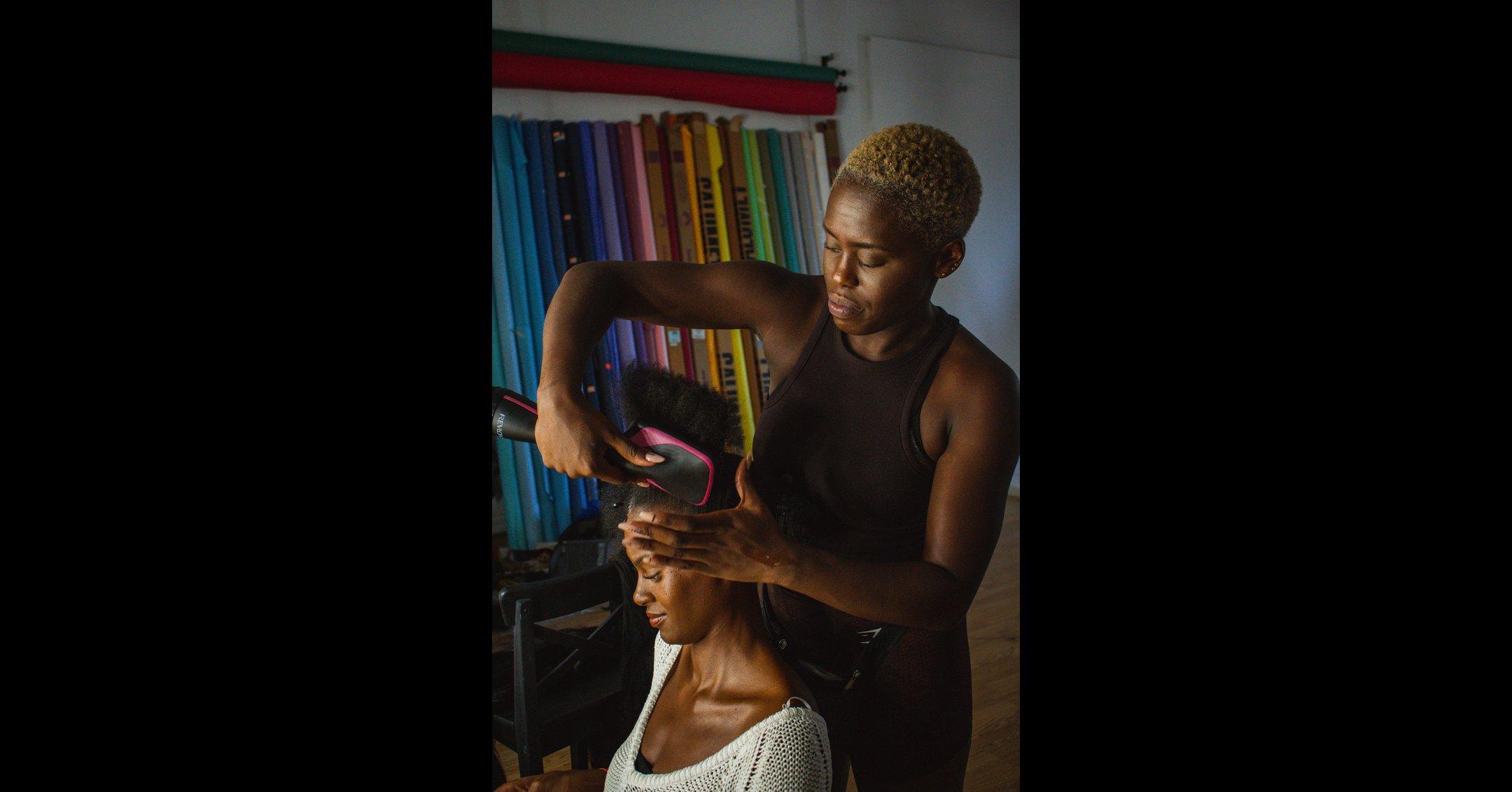
Aminata Kamara at work, photographed by Jumi Popoola. Model: Shanelle Banton. Makeup by Niamh McAleenan.
Backstage with Aminata Kamara and Nigella Miller
London-based hairstylist Aminata Kamara is one of the key industry professionals bringing Black hairstyles to the runway. A powerhouse behind the scenes, she has worked with world-renowned hair stylists Guido Palau and Anthony Turner on fashion shows for major houses like Dior, Prada, Louis Vuitton, Dolce & Gabbana, Coach, and more. Kamara is carving out a space where natural hair is not just accommodated but celebrated. For Kamara, it’s about helping Black models “feel and look just as beautiful as they are.”
“It’s been a whirlwind—just amazing. I’ve loved every single minute of it. There’s so much life, vibrancy, chaos, and emotion backstage, but it’s so fun,” Kamara shares when asked about working with top designer brands. “For me, it’s a huge honor to work with Black models. When young Black girls see themselves on billboards, runways, and TV, it affirms their identity. It tells them their hair is not difficult, challenging, or unmanageable. There’s nothing weird or abnormal about being Black or having Afro hair—it’s just who we are.”
A standout moment for Kamara was working with Blumarine, a brand that consistently prioritizes Black models and culture. “That season, we had seven or eight girls who needed box braids from scratch, and backstage, we only had about four hours to complete them—it was chaos! We had teams working together, sometimes with up to five people on a single model’s hair. People who had never touched synthetic hair before had to learn on the spot. That, for me, is what it’s all about—coming together, regardless of background, to give these models the attention they deserve,” she says.
Dior has featured complex braided hairstyles in some of their latest seasons, where the same look is mirrored across afro, Caucasian, and curly hair textures. Kamara sees working on these braided styles for Dior as a pivotal moment, highlighting how it demonstrated that, with the right approach, there's no need for compromise. It proved that everyone, regardless of hair type, can experience the same level of precision and detail in their styling.
Kamara highlights the growing need for Black hair stylists in fashion, noting that the industry is slowly catching up in its understanding of textured hair. With more Black models appearing on runways, she stresses that the backstage talent evolves accordingly. That means hiring hair stylists who are skilled in working with Afro textures and makeup artists who understand how to work with Black and brown skin. However, while the conversation is moving forward, access to the industry remains limited. Kamara stresses the importance of creating more opportunities for people to break in, stating, “I don’t want to be in the minority—I want backstage to reflect the diversity we see on the runway.”
New York City hair and grooming expert Nigella Miller, featured in Vogue for her work at Pyer Moss SS20 and known for her talent in Black hair styling, echoes this sentiment. Miller is candid about the industry’s shortcomings in elevating Black artists into leadership roles. She points out the disconnect between celebrating Black culture on the runway and excluding Black professionals from the creative process: “The moment Black culture is put on the runway, it usually isn’t one Black person involved in that creative process,” she says. “It would be nice if a Black artist was first to share that experience with the world, but that’s usually not the case.”
The backstage scene has changed, too. The days of having just one Black assistant in the room to handle all the braiding are fading fast. Now, full Black hair teams are not just requested—they’re required. “We've gotten to the point where the one token Black assistant isn't the only one backstage that can braid,” Miller explains. “Now, full Black hair teams are needed to meet the demand and ensure Black models are styled with the same level of care and understanding.”
But while the demand for Black stylists has grown, leadership roles remain scarce, as she adds, “The part that really blows my mind is how much representation of Black lead hairstylists and lead grooming hasn’t really increased. There’s enough space and opportunities for new artists to emerge today in the industry. We need new faces and new work. The industry needs more Black and brown people in higher positions to help push the proper narrative.”
She emphasizes the importance of proper education around Black hair, arguing that it should be a required part of training. “White hairstylists who don’t understand Black hair need to make the effort to learn—it should be mandatory,” she says.
Reflecting on her own experience, Miller recalls that beauty school focused entirely on white hair, with mannequin heads to match. “I had to learn how to style white hair in beauty school, so they should be held to the same standard,” she says. For her, there’s no excuse for Black models still showing up on runways with poorly styled hair due to a lack of training. “Black hair should be taught in our hair education system,” Miller states.
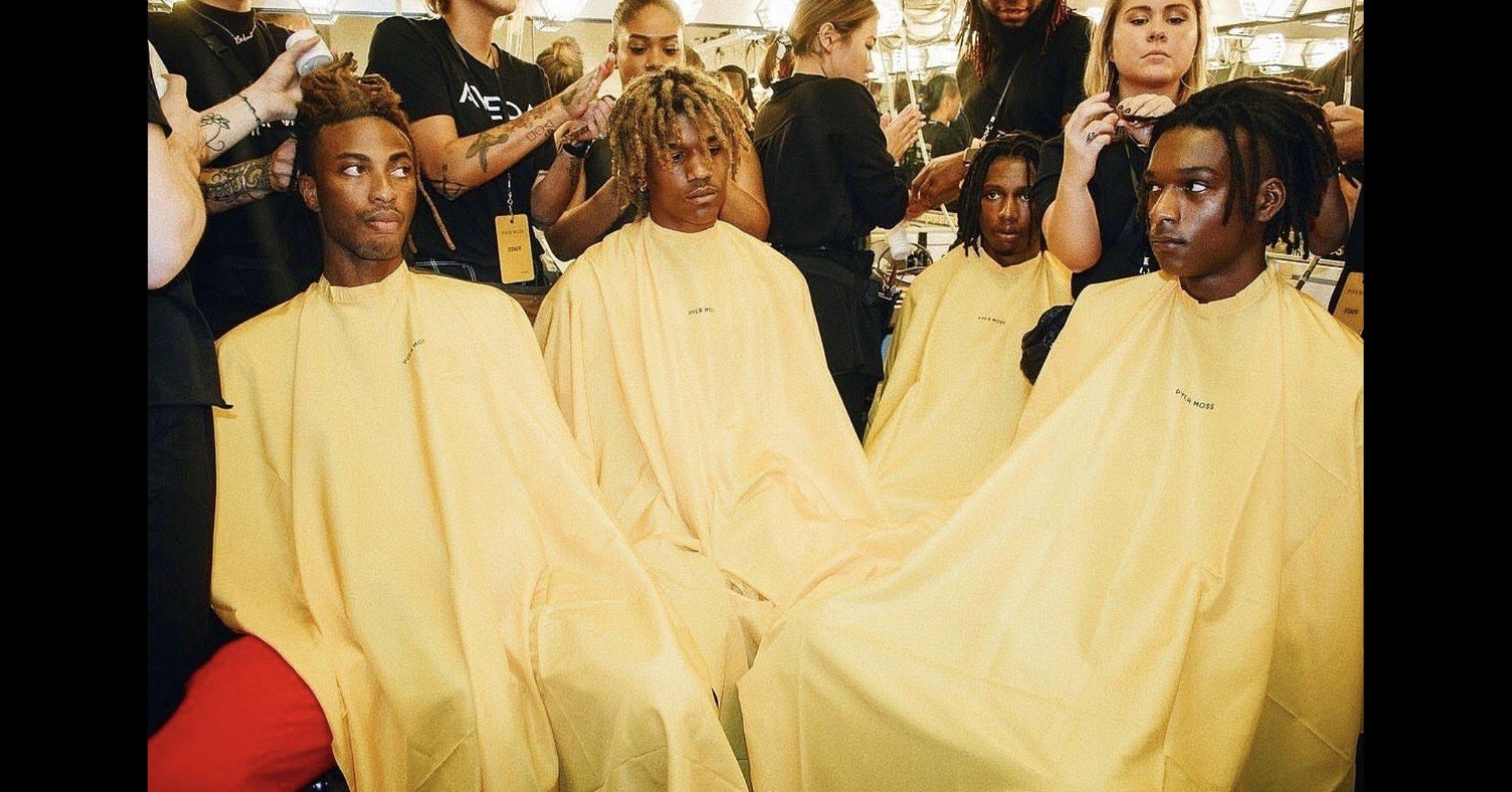
Backstage at Pyer Moss, Spring 2020 Ready-to-Wear
The rise of Black hairstylists in fashion isn’t just a trend—it’s a long-overdue correction. The normalization of textured hair on the runway is a step toward true inclusivity, but real change requires more than just representation. It demands systemic shifts: Black stylists in leadership, fixed education on Afro-textured hair in beauty schools, and an end to models having to supply their own products to look runway-ready. Black hair in high fashion settings is taking up space, and as the industry shifts, these hair artists are making sure Black creatives aren’t just part of the conversation but leading it.
“There’s no shortage of skilled Black hairstylists. The industry is huge—we just need more of them to be given access,” says Aminata Kamara. “We make it work. That’s what we do.”
Kamara and Miller, along with other leading hairstylists, are solidifying Black hair’s place in high fashion—not as an afterthought, but as an essential part of the industry’s evolving standards. Black hairstyles are no longer exceptions on the runway; they are becoming integral to the creative vision of major fashion houses.
As textured styles gain more visibility in Paris and beyond, one thing is clear: this shift isn’t just about aesthetics but about recognizing the artistry behind it. And as the world watches Paris embrace the work of Black hairstylists, the future of fashion is being shaped by those who have been defining it all along.
